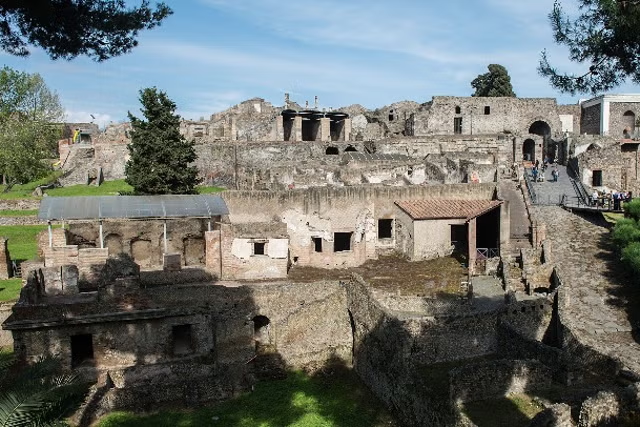A taboo family secret that two early Jamestown colonists took to the grave has unexpectedly been revealed after hundreds of years, thanks to a DNA study.
The study, published in the journal Antiquity, examined two human skeletons buried within the chancel (the space around the altar) of the 1608–1616 church at Jamestown, located near present-day Williamsburg, Virginia.
Founded in A.D. 1607, Jamestown was the first permanent English settlement in the Americas. It served as the capital of the Virginia Colony until the seat of government was moved to Williamsburg in 1699.
The human remains that are the focus of the latest study were thought to be those of some of the earliest Jamestown colonists, given the location of their burial.
"These graves were purposely buried near the altar in the Church chancel," study co-author William Kelso, emeritus director of archaeology at Jamestown Rediscovery, said in a press release. "This prominent location suggests the graves contained the remains of high-status individuals."
The authors decided to conduct a DNA analysis of the remains in the study to determine the identities of the two individuals.
"This study is the first to successfully use aDNA [ancient DNA] as a tool of identification at the colonial site of Jamestown, Virginia," study co-author Karin Bruwelheide with the Smithsonian Institution said in the release.
After performing the DNA analysis, the team then cross-checked the results with historical documents, as well as archaeological and skeletal evidence.
The DNA of the remains, the age of death indicated by the skeletons, the treatment of the burials and historical records indicate that the individuals were Sir Ferdinando Wenman (A.D. 1576–1610) and Captain William West (about AD 1586–1610). The two men were part of the prominent family of the colony's first governor, Thomas West, Third Baron De La Warr.
The study also revealed that the two men were related through the material line—an unexpected finding. This prompted the team to carry out further genealogical and historical research in an attempt to untangle the relationship between the two individuals.
This effort led to the discovery of illegitimacy in the West family—a fact that was omitted, likely intentionally, from genealogical records. Namely, the team uncovered evidence of a court case regarding the inheritance of Captain West's holdings after he died.
Following Captain West's death, his aunt, caregiver and will beneficiary, Mary Blount, attempted to recover the inheritance.
In the court records, Blount insinuates that Captain West was the illegitimate son of Elizabeth, the unmarried daughter of William West the elder, First Baron De La Warr. The records state that Captain West had been raised by Blount on behalf of Elizabeth, her unmarried, deceased sister.
Illegitimacy was taboo in the 17th century, particularly within high-status families, possibly explaining why it was not recorded in genealogical documents.
"This study is the first to demonstrate that aDNA can be used as a tool in identifying not only ancestry but historical cases of illegitimacy in high-status, seventeenth-century families," the study authors wrote.
"This study further reinforces the need for multidisciplinary approaches to better answer questions of not only who was involved in colonisation, but possibly, why."
Do you have a tip on a science story that Newsweek should be covering? Do you have a question about archaeology? Let us know via science@newsweek.com.
References
Owsley, D. W., Bruwelheide, K. S., Harney, É., Mallick, S., Rohland, N., Olalde, I., Barca, K. G., Ramsey, A. J., Hull-Walski, D. A., Kelso, W. M., May, J. E., Broomandkhoshbacht, N., Ferry, M., Lawson, A., Michel, M., Oppenheimer, J., Stewardson, K., Zalzala, F., Simon, V. E., Givens, D. M., Lavin, M. D., & Reich, D. E. (2024) Historical and archaeogenomic identification of high-status Englishmen at Jamestown, Virginia. Antiquity, 98(400). https://doi.org/10.15184/aqy.2024.75
Disclaimer: The copyright of this article belongs to the original author. Reposting this article is solely for the purpose of information dissemination and does not constitute any investment advice. If there is any infringement, please contact us immediately. We will make corrections or deletions as necessary. Thank you.



